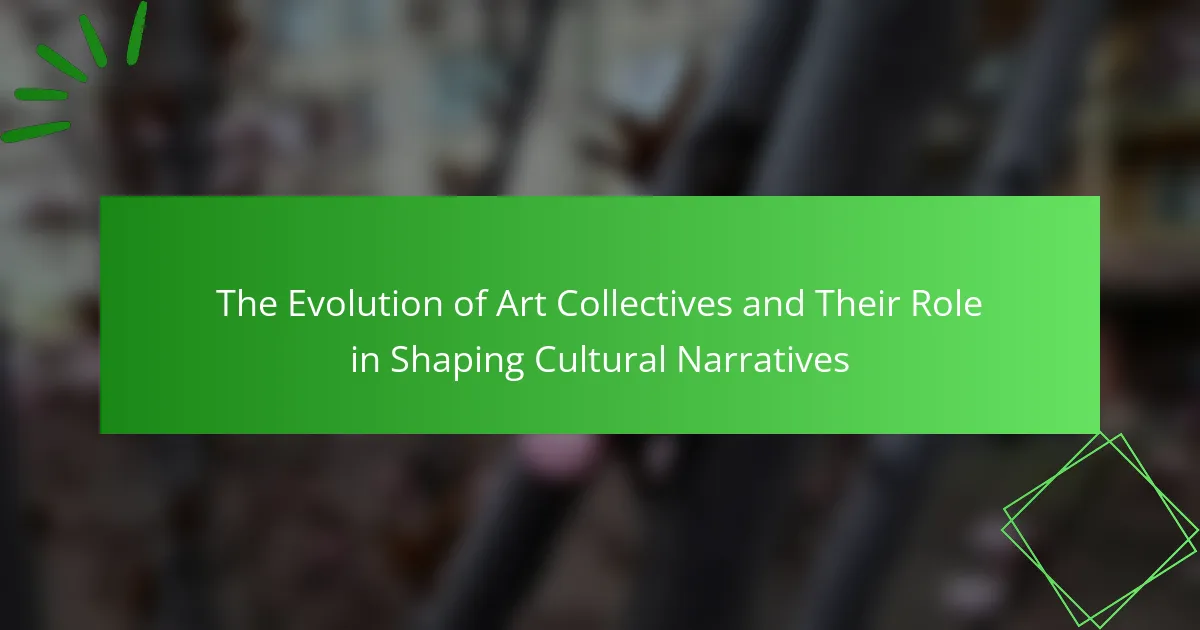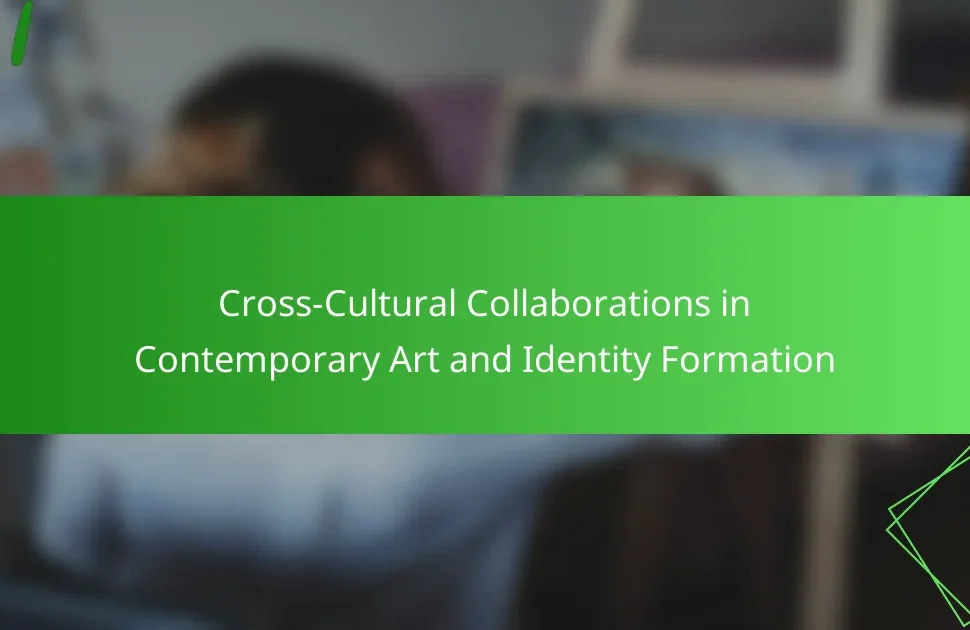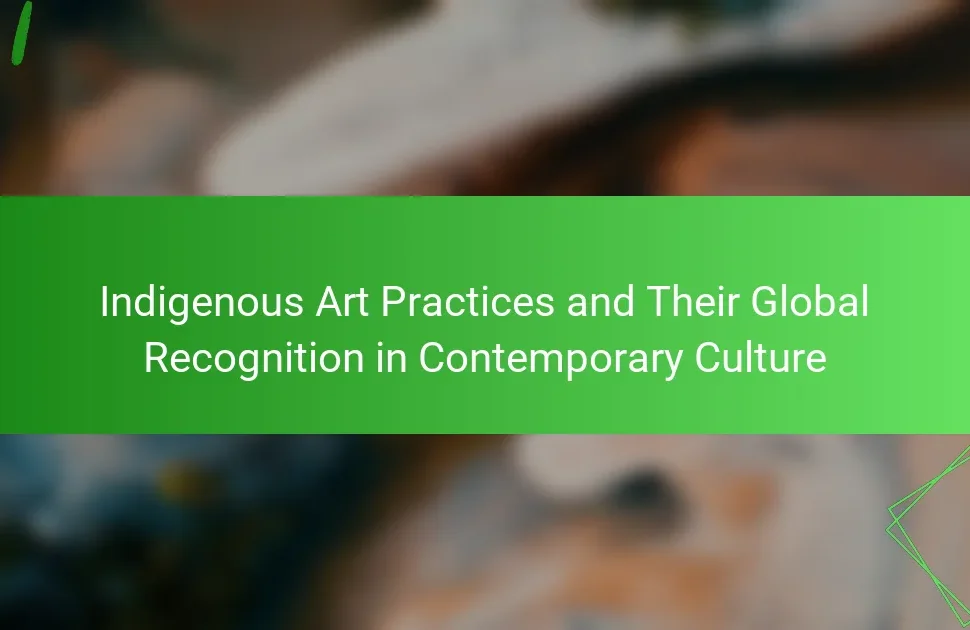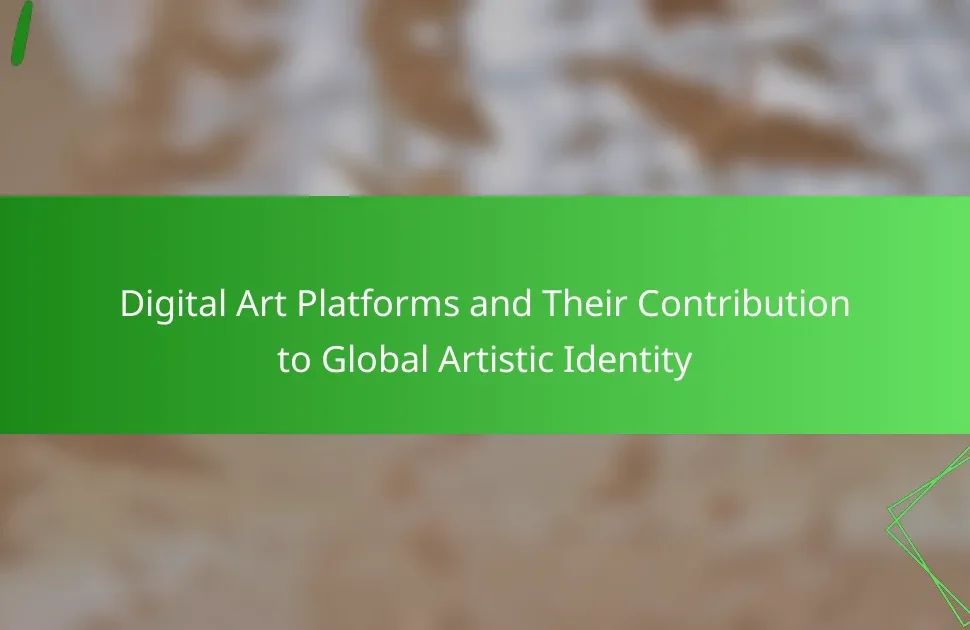Art collectives play a crucial role in shaping cultural narratives by fostering collaboration and amplifying marginalized voices. They challenge traditional norms and adapt to societal changes, ensuring their ongoing relevance. Successful collectives emphasize community engagement and shared resources, while addressing social issues through impactful projects. Technological advancements further enhance their reach and influence in the contemporary art landscape.
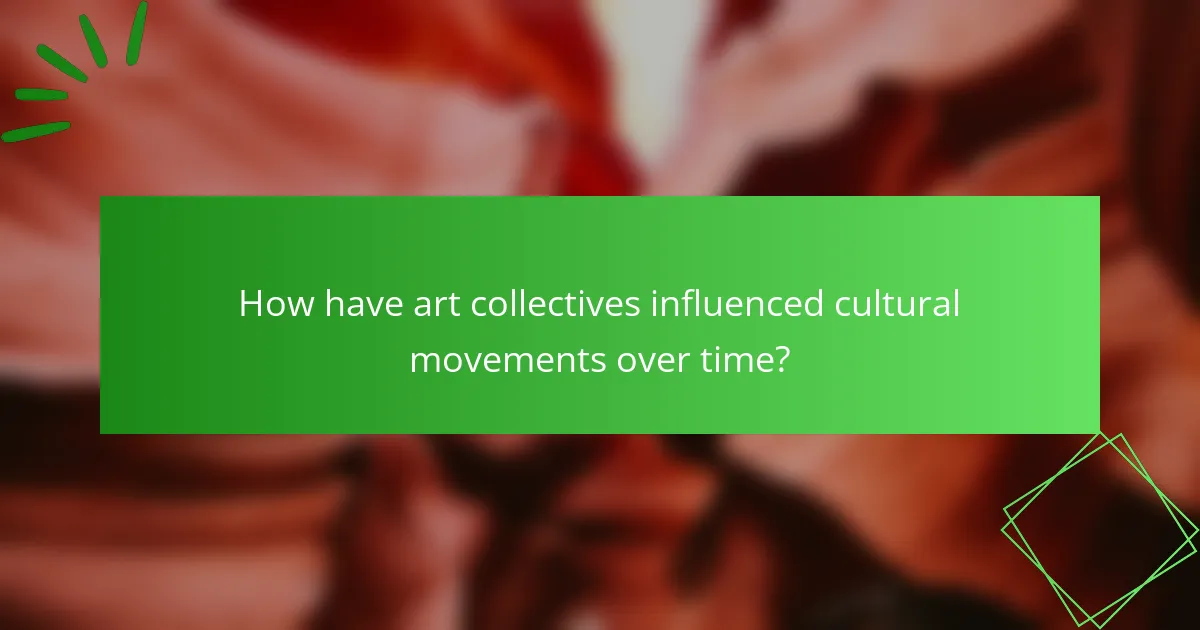
How have art collectives influenced cultural movements over time?
Art collectives have significantly influenced cultural movements by fostering collaboration and innovation. They challenge traditional norms and provide platforms for marginalized voices. Throughout history, collectives like Dada and Fluxus have reshaped artistic expression and social commentary. These groups often emphasize community engagement and shared resources, which enhances cultural narratives and promotes diverse perspectives. Their unique ability to adapt to societal changes ensures their ongoing relevance in contemporary culture.
What role did early art collectives play in shaping modern art?
Early art collectives significantly influenced modern art by fostering collaboration and challenging traditional norms. They created spaces for experimentation, allowing diverse voices to emerge. Collectives like Dada and Surrealism questioned artistic conventions, paving the way for contemporary movements. Their emphasis on community and shared vision reshaped cultural narratives, emphasizing the importance of collective identity in art.
How do contemporary art collectives reflect societal changes?
Contemporary art collectives reflect societal changes by fostering collaboration and addressing pressing social issues. These groups often challenge traditional artistic norms, creating inclusive spaces that amplify diverse voices. For instance, collectives like Guerrilla Girls highlight gender inequality in the art world, while others focus on environmental concerns. This evolution showcases art’s role as a catalyst for dialogue and social change, influencing cultural narratives and public perception. Through their collective efforts, these artists respond to and shape contemporary societal dynamics, making art a powerful tool for activism and reflection.
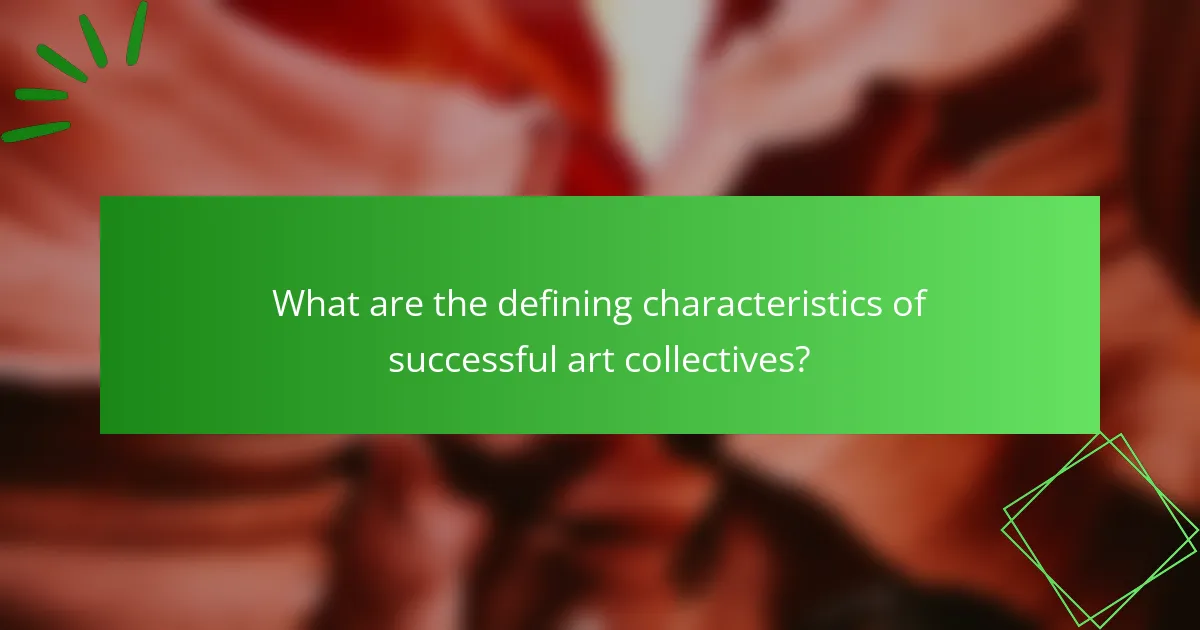
What are the defining characteristics of successful art collectives?
Successful art collectives are defined by collaboration, shared vision, and community engagement. They thrive on diverse perspectives, fostering innovation and inclusivity. Strong leadership within these collectives often drives creative direction, while adaptability to cultural shifts enhances their relevance. Unique attributes include the ability to create impactful narratives that resonate with audiences, often leading to significant cultural contributions.
Which collaborative practices enhance creativity within art collectives?
Collaborative practices such as open dialogue, shared resources, and interdisciplinary projects significantly enhance creativity within art collectives. These practices foster an environment where diverse perspectives converge, leading to innovative ideas and artistic expressions.
For example, regular brainstorming sessions encourage members to share insights, while collective exhibitions showcase the variety of talents and concepts. Additionally, mentorship within collectives can nurture emerging artists, promoting skill development and creative risk-taking.
Art collectives that prioritize inclusivity and collaboration often produce work that resonates more deeply with cultural narratives, reflecting a broader range of experiences and viewpoints. As a result, these collectives can drive cultural conversations and inspire societal change.
How does diversity within art collectives contribute to their impact?
Diversity within art collectives enhances their impact by fostering a range of perspectives and creativity. This variety leads to innovative expressions that resonate with broader audiences. Furthermore, diverse voices challenge dominant narratives, promoting inclusivity and representation in cultural discourse. As a result, art collectives become powerful agents of social change, reflecting the complexities of society.

In what ways do art collectives address social issues?
Art collectives address social issues by fostering collaboration, amplifying marginalized voices, and creating community-focused projects. They leverage collective creativity to challenge societal norms and engage audiences in critical dialogues. For instance, collectives often organize exhibitions that spotlight issues like racial inequality, environmental concerns, and gender identity. These initiatives promote awareness and inspire action, making art a powerful tool for social change.
How do art collectives engage with local communities?
Art collectives engage with local communities by fostering collaboration and inclusivity. They create spaces for dialogue, allowing community members to express their identities and experiences. Through workshops, exhibitions, and public art projects, these collectives promote cultural exchange and social awareness. This engagement often leads to the revitalization of local areas, enhancing community pride and cohesion. Additionally, art collectives can address social issues, using their platforms to advocate for change and inspire action within the community.
What are the most notable art collectives championing social justice?
Notable art collectives championing social justice include the Black Artists + Designers Guild, For Freedoms, and the Guerrilla Girls. These collectives utilize art to address social issues and advocate for marginalized communities.
The Black Artists + Designers Guild promotes Black artists and designers, creating a platform for visibility and representation. For Freedoms focuses on civic engagement through art, encouraging dialogue on political issues. The Guerrilla Girls raise awareness about gender and racial inequality in the art world, using provocative visuals and humor to challenge the status quo.
These collectives exemplify the evolving role of art in shaping cultural narratives and advocating for social change. Their unique approaches highlight the intersection of creativity and activism.
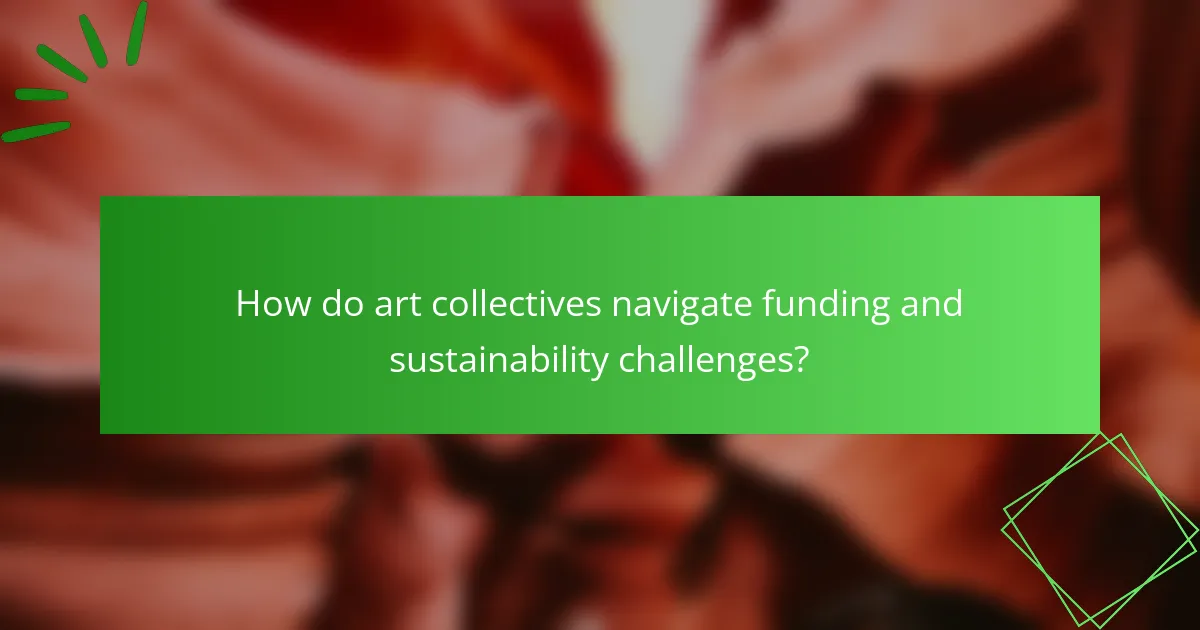
How do art collectives navigate funding and sustainability challenges?
Art collectives often rely on diverse funding sources and innovative strategies to address sustainability challenges. They navigate these obstacles by forming partnerships with local businesses, applying for grants, and organizing community events. Collaborations enhance visibility and attract financial support. Additionally, many collectives adopt membership models, providing exclusive benefits to sustain operations. This approach fosters a sense of ownership among supporters while ensuring a steady income stream. Ultimately, adaptability and community engagement are crucial for the longevity of art collectives in a competitive landscape.
What funding models are most effective for art collectives?
Collaborative funding models are most effective for art collectives. These include crowdfunding, grants, and membership-based financing. Crowdfunding allows artists to engage directly with supporters, fostering community investment. Grants from arts organizations provide financial resources without repayment obligations, enabling creative freedom. Membership models create sustainable income through dedicated patrons who receive exclusive benefits. Each model enhances the collective’s ability to shape cultural narratives while ensuring financial viability.
How do art collectives balance commercial success with artistic integrity?
Art collectives balance commercial success with artistic integrity by prioritizing collaborative vision while strategically engaging with market demands. They often establish a clear mission that aligns their creative goals with audience expectations.
Collectives can maintain artistic integrity by selecting projects that resonate with their values, even if those projects are less commercially viable. For example, they may choose to support emerging artists or socially relevant themes, fostering a unique cultural narrative.
Additionally, successful art collectives often leverage partnerships with brands or institutions that share similar values, allowing them to access funding without compromising their artistic vision. This approach can enhance their visibility while preserving the authenticity of their work.
Ultimately, the balance between commercial success and artistic integrity is achieved through thoughtful decision-making that reflects the collective’s core mission and audience engagement strategies.
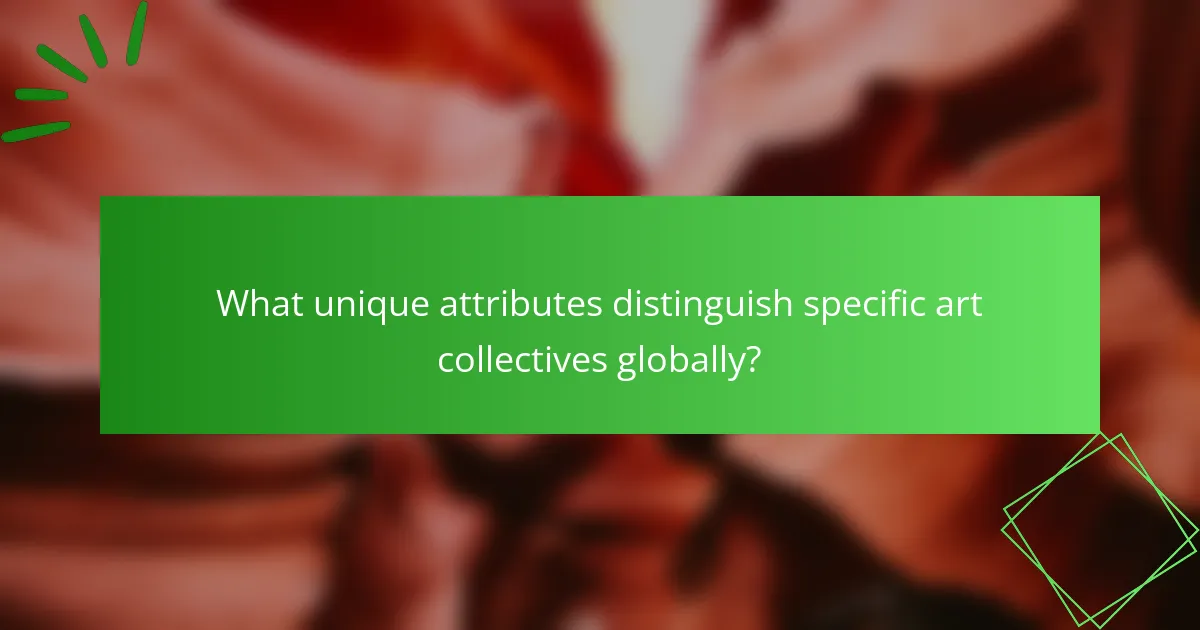
What unique attributes distinguish specific art collectives globally?
Unique attributes that distinguish specific art collectives globally include their cultural context, collaborative methods, and thematic focus. For example, the Guerrilla Girls emphasize feminist issues through provocative art, while TeamLab integrates technology and nature in immersive installations. Each collective’s approach shapes its identity and impact on cultural narratives. Their unique attributes often stem from local influences, historical backgrounds, and the socio-political climate, which collectively contribute to their distinctiveness in the global art landscape.
How do cultural contexts shape the objectives of art collectives?
Cultural contexts significantly influence the objectives of art collectives by shaping their themes and missions. Art collectives often reflect societal values, historical narratives, and local issues. For instance, collectives in marginalized communities may prioritize social justice, while those in urban settings might focus on contemporary issues. This alignment with cultural contexts enhances the relevance and impact of their work. Furthermore, unique attributes like the collective’s geographic location and demographic composition can lead to rare perspectives that enrich cultural narratives. As a result, the objectives of art collectives evolve to resonate with their specific cultural environments.
Which art collectives are recognized for their innovative approaches?
Art collectives recognized for innovative approaches include the Guerrilla Girls, Superflex, and The Yes Men. These groups challenge societal norms and engage audiences through activism and unique artistic expressions. The Guerrilla Girls use provocative graphics to address gender inequality in the art world. Superflex focuses on collaborative projects that promote social change and sustainability. The Yes Men employ satire to critique corporate practices and highlight social issues. Each collective exemplifies how art can drive cultural narratives and provoke thought.
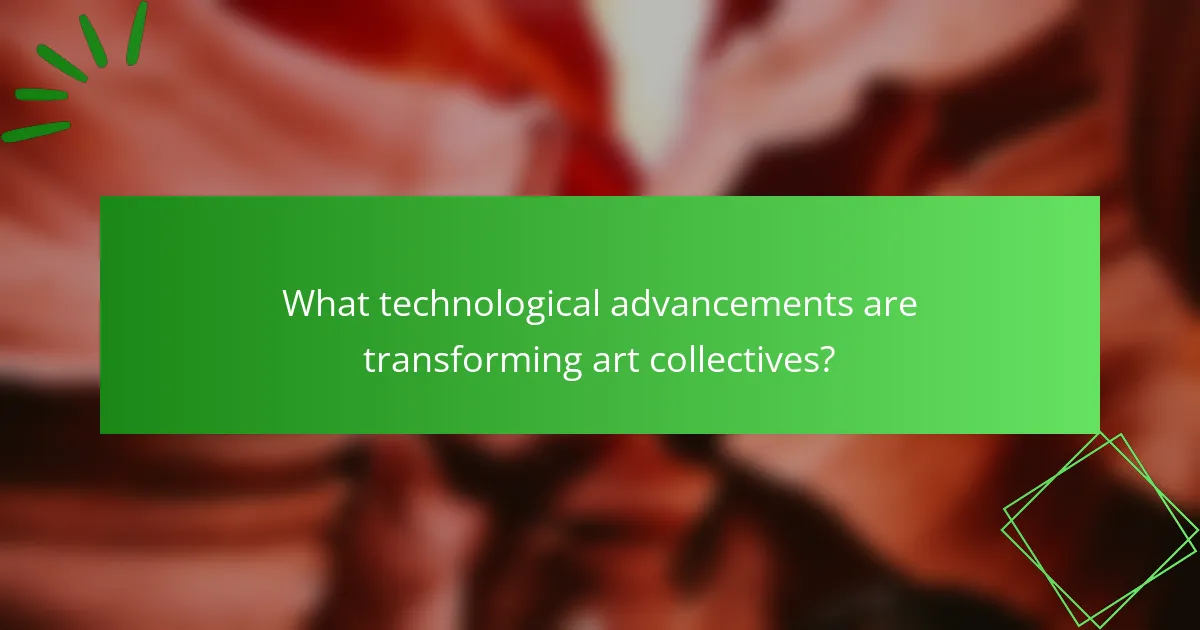
What technological advancements are transforming art collectives?
Technological advancements are significantly transforming art collectives by enhancing collaboration and expanding reach. Digital platforms allow artists to connect globally, share their work, and engage audiences in innovative ways. Virtual reality and augmented reality create immersive experiences, redefining how art is perceived and interacted with. Blockchain technology offers transparency in ownership and provenance, empowering artists and collectors alike. Additionally, data analytics provide insights into audience preferences, enabling art collectives to tailor their offerings effectively. These advancements are reshaping cultural narratives by democratizing access to art and fostering diverse voices in the creative community.
How are digital platforms reshaping collaboration in art collectives?
Digital platforms are transforming collaboration in art collectives by enabling wider participation and enhancing visibility. These platforms facilitate connections among artists, curators, and audiences, fostering diverse cultural narratives. They allow for real-time collaboration, resource sharing, and audience engagement, which were previously limited by geographic constraints. The unique attribute of digital platforms is their ability to democratize access to art, empowering underrepresented voices in the art community. As a result, art collectives can now leverage technology to create more inclusive and dynamic cultural expressions.
What role does social media play in the visibility of art collectives?
Social media significantly enhances the visibility of art collectives by providing platforms for engagement and exposure. These networks facilitate direct interaction between artists and audiences, allowing collectives to showcase their work to a global audience. The ability to share multimedia content, such as images and videos, amplifies the impact of their artistic narratives. Additionally, social media algorithms can promote collective events and initiatives, increasing attendance and participation. As a result, art collectives can shape cultural narratives more effectively, reaching diverse demographics and fostering community connections.
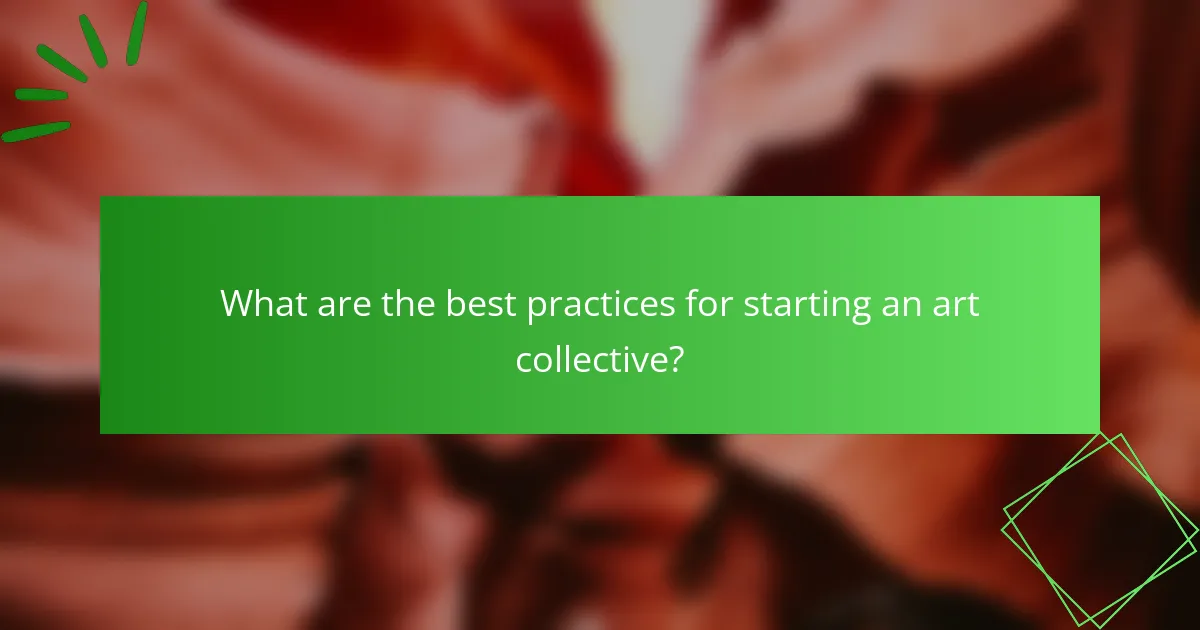
What are the best practices for starting an art collective?
To start an art collective effectively, focus on collaboration, clear vision, and community engagement. Establish a shared mission that reflects the values and goals of the group. Formulate a structure for decision-making and responsibilities to ensure smooth operations. Foster an inclusive environment that welcomes diverse perspectives and talents. Engage with the local community through events and outreach to build support and visibility. Regularly evaluate the collective’s impact and adapt strategies to enhance relevance and effectiveness.
What common mistakes should new art collectives avoid?
New art collectives should avoid common mistakes such as lack of clear vision, inadequate communication, neglecting diversity, and failing to engage with their community. A strong foundation in these areas enhances cultural narratives and collective impact.
1. Lack of clear vision: Establish a mission statement to guide collective activities.
2. Inadequate communication: Foster open dialogue among members to ensure alignment.
3. Neglecting diversity: Include varied perspectives to enrich artistic expression.
4. Failing to engage with the community: Build relationships with local audiences for greater relevance.
How can art collectives effectively promote their work?
Art collectives can effectively promote their work by leveraging community engagement, social media, and collaborative projects. They foster a sense of belonging and shared purpose, which enhances visibility. Utilizing platforms like Instagram and Facebook allows for broader audience reach. Collaborating with local businesses or cultural institutions can create unique events that attract diverse participants. Engaging in storytelling around their art connects emotionally with audiences, further amplifying their message.
